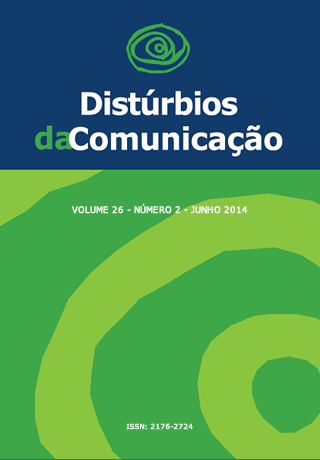Preferencia de los profesionales de la unidad de terapia intensiva neonatal por el uso de la nasogástrica u orogástrica
Palabras clave:
recién nacido, prematuro, fonoaudiología, métodos de alimentación.Resumen
Introducción: La sonda gástrica es un procedimiento esencial para ayudar en la nutrición del prematuro. Objetivo: Identificar la preferencia de los profesionales de la Unidad de Terapia Intensiva Neonatal (UTIN) en relación con la elección del tipo de sonda de alimentación nasogástrica (SNG) u orogástrico (SOG). Método: Tomaron parte de esta investigación 38 profesionales de la UTIN que fueron divididos en dos grupos: GSOG: profesionales que prefieren el SOG y GSNG: profesionales que prefieren la SNG. El instrumento de investigación fue un cuestionario que cubre: Identificación, formación, titulación, lugar de trabajo, cuestiones con respecto a la preferencia por la sonda utilizada en la UTIN y la justificación de de los profesionales sobre la mejor sonda de alimentación. Resultados: Los dos grupos presentaron el mismo porcentaje de preferencia por la SNG y el SOG, ambos con 50%. En lo que respecta a la justificación de la elección del tipo de sonda, la más citada por el GSNG fueron: facilitar la estimulación orofacial y succión no nutriva (68,4%) y facilitar el estímulo de la succión de la mama (57,9%), ya los miembros del GSOG presentaron como justificaciones, no interferir con la respiración nasal (84,2%) y causar menos trauma en la cavidad nasal (78,9%). Conclusión: Fue posible observar que mitad de los profesionales de la UCIN prefieren la SOG, por no interferir en la respiración nasal; causar menos trauma en la cavidad nasal y de proporcionar una mejor fijación. La otra mitad de los profesionales entrevistados prefieren a SNG, porque facilita la estimulación orofacial, la succión no nutritiva y la estimulación de la succión de la mama.Descargas
Métricas
Descargas
Publicado
Número
Sección
Licencia
Derechos de autor 2014 Janaina de Alencar Nunes, Esther Mandelbaum Bianchini, Hanna Marinho Martins, Sara Emanuele Calheiros

Esta obra está bajo una licencia internacional Creative Commons Atribución 4.0.









